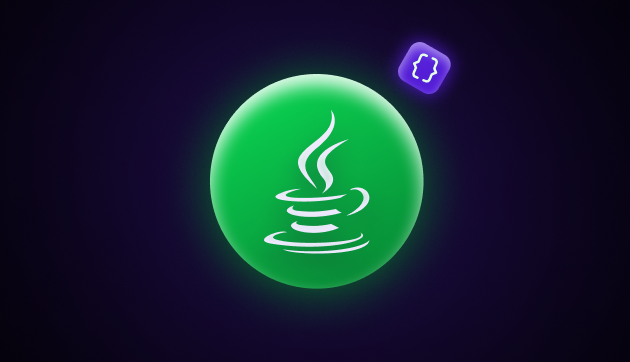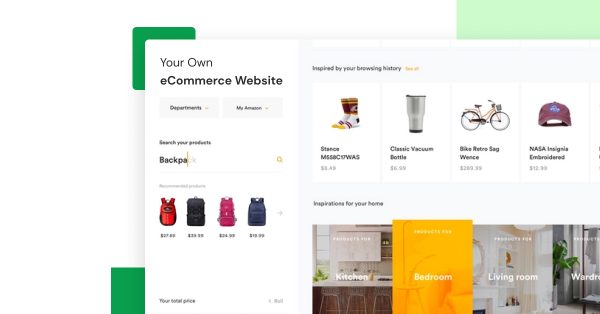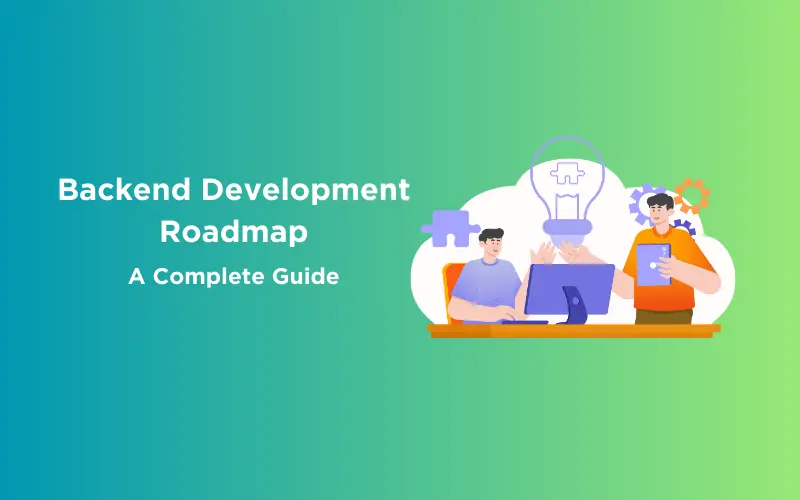![What Does a Front End Developer Do? A Beginner’s Guide [2025] 1 Post thumbnail](https://www.guvi.in/blog/wp-content/uploads/2024/02/Feature-image-What-does-a-Front-End-Developer-do-A-Complete-Guide.webp)
What Does a Front End Developer Do? A Beginner’s Guide [2025]
Apr 14, 2025 8 Min Read 3578 Views
(Last Updated)
The digital world is evolving rapidly, and at the heart of every interactive website or web application is a front end developer. This tech field provides one of the most available entry points to start a coding career.
What does a front-end developer do? These tech professionals code the visual elements users see and interact with on websites. They build interactive features like buttons and navigation menus with HTML, CSS, and JavaScript that make it responsive and dynamic.
You can become skilled at front-end development within 6 months if you study consistently. Part-time learners usually take about a year to get there. This piece walks you through the responsibilities, skills needed, and career opportunities that await front-end developers in 2025.
Table of contents
- Who is a Front end Developer?
- Frontend Development vs. Backend Development
- What Exactly Does a Frontend Developer Do? Day-to-Day Tasks
- 1) Turning UI/UX Designs into functional web pages
- 2) Writing clean, efficient, and maintainable code using HTML, CSS, and JavaScript
- 3) Ensuring cross-browser compatibility
- 4) Optimizing web pages for performance and responsiveness
- 5) Debugging and testing to fix issues
- 6) Collaborating with designers, backend developers, and product teams
- Essential Skills for a Front end Developer
- 1) Technical Skills
- 2) Soft Skills
- Is Front end Development the Right Career for You?
- Top Industries Hiring Frontend Developers in 2025
- E-commerce
- FinTech (Financial Technology)
- EdTech (Education Technology)
- Healthcare
- Media & Entertainment
- Takeaways…
- FAQs
- Q1. What are the essential skills needed to become a front-end developer?
- Q2. What does a typical day look like for a front-end developer?
- Q3. How long does it take to learn front-end development?
- Q4. Is front-end development a good career choice in 2025?
Who is a Front end Developer?
Frontend developers (sometimes called frontend engineers) build the visible and interactive elements of websites and web applications. They turn design concepts into functional code that powers the user experience. Their work shapes how users interact with digital products.
![What Does a Front End Developer Do? A Beginner’s Guide [2025] 2 front end developer](https://www.guvi.in/blog/wp-content/uploads/2025/04/1-1.png)
Front-end developers implement the visual aspects of websites that users directly interact with—the user interface (UI) and the overall user experience (UX). They create:
- Interactive elements like buttons, forms, and navigation menus
- Visual components, including layouts, graphics, and animation effects
- Responsive designs that work on different screen sizes and devices
Frontend developers employ three core technologies to accomplish these tasks:
- HTML (HyperText Markup Language) – Defines the structure and content of web pages
- CSS (Cascading Style Sheets) – Controls the visual styling and appearance
- JavaScript – Adds interactivity and dynamic functionality
Frontend developers ensure websites perform well and remain accessible to all users. They test browser compatibility, fix interface issues, and work together with team members to create seamless digital experiences.
Frontend Development vs. Backend Development
In order to completely understand what a frontend developer does, we must understand the differences between frontend and backend development and what they encompass. Let’s learn them now.
The difference between frontend and backend development helps explain a frontend developer’s unique role. These two disciplines create the complete web development ecosystem but serve different purposes.
- Frontend development deals with what users directly interact with—the client side of web applications. Your browser displays everything that falls under the frontend domain. Navigation menus, buttons, forms, images, text, and all visual elements make up the graphical user interface (GUI).
- Backend development handles server-side logic that powers applications behind the scenes. Backend systems manage data storage, processing, and security—components users never see but that make applications work properly.
This table highlights key differences:
| Frontend Development | Backend Development |
| Creates visual elements users see and interact with | Handles server-side logic and databases |
| Uses HTML, CSS, and JavaScript | Uses languages like Python, Java, PHP, etc. |
| Focuses on user interface and experience | Focuses on data processing and application logic |
| Client-side rendering | Server-side operations |
| Optimizes for visual appeal and usability | Optimizes performance, scalability, and security |
What Exactly Does a Frontend Developer Do? Day-to-Day Tasks
Front-end developers do way more than just write code. These tech pros spend their day turning creative ideas into working websites by mixing technical know-how, problem-solving, and teamwork. Let’s get into what makes up their daily work life:
![What Does a Front End Developer Do? A Beginner’s Guide [2025] 3 2 1](https://www.guvi.in/blog/wp-content/uploads/2025/04/2-1.png)
1) Turning UI/UX Designs into functional web pages
Front-end developers start their work by turning design mockups into working web pages. They take visual elements from UI/UX designers and build them with code.
Think of front-end developers as digital architects who breathe life into static designs. The UI/UX team hands over completed designs, and developers turn those visual elements into working code. This process needs sharp attention to detail and technical expertise.
Developers stick to specific design rules during implementation. They make sure every element – from fonts and colors to button styles and layouts – shows up exactly as the design files specify. This needs tight coordination with designers to grasp each visual component’s purpose.
The design process isn’t just a one-time handoff. Technical challenges pop up as development moves forward, and developers often need designer input. They run into situations where designer support helps solve coding issues.
2) Writing clean, efficient, and maintainable code using HTML, CSS, and JavaScript
Modern web experiences rely on three core technologies: HTML, CSS, and JavaScript. Each has its job:
- HTML (HyperText Markup Language) sets up the basic structure and layout of web content, creating the framework for all page elements.
- CSS (Cascading Style Sheets) takes care of how things look, controlling layouts, colors, fonts, and spacing.
- JavaScript adds dynamic interactions, making websites respond to what users do.
Clean code needs organization. Developers write code that’s easy to understand, well-documented, and works well now and later. This smart approach saves time when updates or fixes are needed.
Many developers also use frameworks and libraries to extend these core technologies. Tools like React, Angular, or Vue.js make work faster with ready-made components. Keeping up with these technologies helps developers grow and work better.
3) Ensuring cross-browser compatibility
Making websites work the same way in different browsers and devices is one of the toughest challenges. Testing across browsers makes sure users get a smooth experience on whatever platform they pick.
Developers think about various browser environments, including older versions that might not support newer features. This leads to several strategies:
- Testing in multiple browsers (Chrome, Firefox, Safari, Edge) and versions
- Fixing rendering differences between browser engines
- Creating backups for unsupported features
- Making sites work in different browsing situations
Websites don’t need to look the same in every browser – they just need to work. This practical approach means core features work everywhere, with better experiences on modern browsers.
Early testing saves time and money. Fixing compatibility issues gets harder and costs more when left for later. Most developers test regularly, checking compatibility after each major update.
Also read our trending and extensive e-book on React: Your Go-To Guide for FullStack Development Journey and learn all about React and how to get started with it in full stack development through a guide hand-crafted by experts to help you master React easily.
4) Optimizing web pages for performance and responsiveness
Websites need to load fast and respond smoothly to user actions. Performance tweaks take up much of a developer’s day.
Front-end optimization mainly cuts file sizes and reduces page load requests. Key tasks include:
- Shrinking images without losing quality
- Cutting down code by removing extra characters
- Combining smaller files to need fewer HTTP requests
- Setting up smart caching for static files
- Using responsive design to work well on all devices
Front-end delays can make up 80% of how long a website takes to respond. Developers balance good looks with speed, often using tricks like progressive loading to make sites feel faster even when they can’t load any quicker.
5) Debugging and testing to fix issues
Debugging is part of every developer’s daily routine. They find and fix code problems methodically to keep everything working right.
Developers debug in several ways:
- Console debugging – Using console.log() to track values and code flow
- Browser developer tools – Using built-in browser tools to check code behavior
- Breakpoints – Pausing code to check it step by step
Chrome DevTools stands out with its features for checking HTML/CSS, fixing JavaScript, and analyzing network stuff. These tools let developers inspect elements, test style changes, and find performance bottlenecks.
6) Collaborating with designers, backend developers, and product teams
Front-end development thrives on teamwork. Developers talk with different team members throughout their day. Developers work closely with designers to turn visual ideas into working interfaces. They share technical insights during design, pointing out what’s possible and highlighting technical needs for performance, accessibility, and browser support.
Backend developers and front-end teams stay in touch to make sure everything works together smoothly. They focus on proper data flow between front-end and back-end parts, paying special attention to API needs and data formats.
Good collaboration needs both tech skills and clear communication. Developers explain complex tech ideas to non-technical team members while understanding enough about design to work well with creative pros. This mix of different skills makes the job both dynamic and challenging.
Essential Skills for a Front end Developer
The right mix of skills builds a strong foundation for any front-end developer’s career. Modern front-end professionals need more than just programming knowledge. They need a mix of technical expertise and people skills. Let’s take a closer look at the key skills that make front-end developers stand out in 2025.
![What Does a Front End Developer Do? A Beginner’s Guide [2025] 4 3](https://www.guvi.in/blog/wp-content/uploads/2025/04/3-1200x630.png)
1) Technical Skills
HTML, CSS, and JavaScript make up the core of front-end development. These three languages create the foundation for everything else. HTML builds the website structure, CSS handles the look and feel, and JavaScript adds interactivity. You can’t be a front-end developer without mastering these basic technologies.
But knowing these basic languages is just the start. Today’s frontend developers should expand their technical toolkit with:
- CSS Preprocessors – Tools like Sass or LESS make CSS development smoother and more organized. These tools let developers write better code with features like variables, nesting, and mixins.
- JavaScript Frameworks and Libraries – React, Angular, and Vue.js are now standard requirements in the industry. These tools offer better ways to build complex user interfaces and speed up development.
- Responsive Design – Users access websites from many devices, so responsive design skills are vital. Your websites should work well on all screen sizes, from phones to desktop monitors.
- Version Control Systems – Git helps track code changes and lets developers cooperate with others. Version control helps manage code development and makes team projects more effective.
- Testing and Debugging – Frontend developers should know how to find and fix code issues. This means using browser developer tools, testing frameworks like Jasmine or Mocha, and fixing browser compatibility problems.
- Web Performance Optimization – Making pages load faster and respond better matters more than ever. This includes making files smaller, reducing HTTP requests, and using good caching strategies.
- Accessibility Knowledge – Making websites work for people with disabilities has become essential. You should know accessibility standards like WCAG and how to build websites everyone can use.
The technical skills companies want may vary by project. Despite that, most front-end developers should know the technologies listed above.
Yes, it is important to keep updating your technical skills as new frameworks and methods appear. The digital world changes faster all the time, so you need to keep learning.
2) Soft Skills
Technical skills matter, but great front-end developers also need excellent people skills. These personal and thinking abilities often determine if a good coder becomes truly outstanding.
- Communication skills – They are probably the most important soft skills for frontend developers. Frontend work connects design, backend development, and user experience. Good communication prevents confusion and helps teams arrange their project goals. You need to explain technical ideas clearly and listen carefully to requirements and feedback.
- Problem-solving abilities – This skill is just as important. Frontend development often presents complex challenges that need creative solutions. Strong analytical thinking helps developers fix issues, improve code, and create better user experiences. Problem-solving goes beyond fixing bugs – it’s about finding smart solutions systematically.
- Time management – This skill really matters when handling multiple projects with tight deadlines. Frontend developers should prioritize tasks well, stay organized, and deliver work on time. This skill helps when working with designers and backend teams who depend on your frontend components.
- Collaboration skills – They matter because front-end development is rarely done alone. Working well with designers, backend developers, and product managers means respecting their expertise and finding good compromises.
- Creativity – This skill plays a bigger role in front-end development than you might think. You need creative thinking to solve interface challenges and picture how designs will work. This creativity helps with both design and technical problems.
- User empathy – empathy helps developers build interfaces that really work for people. Understanding how users interact with websites helps make better development choices and more natural experiences.
Building both technical expertise and people skills will make you a well-rounded front-end developer who can handle complex projects and work effectively in diverse teams.
Is Front end Development the Right Career for You?
Your long-term satisfaction depends on choosing a career path that matches your personality and goals. Let’s take a closer look at frontend development’s unique advantages that might perfectly align with what you want, or might not suit your preferred way of working.
The first step to knowing if frontend development is right for you requires honest self-reflection. Here are some questions to help you decide if this ever-changing field suits you:
- Do you enjoy blending creativity with technical problem-solving?
- Are you passionate about both technology and visual design?
- Can you commit to continuous learning as technologies evolve?
- Do you prefer roles that offer flexible work arrangements?
- Are you comfortable working with diverse teams?
These answers will help you learn about your potential fit for front-end development. Let’s look at some factors that will help you decide for sure:
- Job Market Outlook: Frontend developers have an exceptionally bright future ahead. The U.S. Bureau of Labor Statistics shows web developers (including frontend specialists) will see job growth of 8% from 2023 to 2033, faster than average across other jobs. Some industry analyses look even better, projecting growth up to 23% through 2031.
- Financial Considerations: Frontend developers earn competitive salaries. Entry-level positions in India start at ₹4-5 LPA, mid-level developers make ₹8-12 LPA, and senior professionals can earn ₹15-25 LPA or more based on their expertise and location.
- Accessibility of Entry: Frontend development stands out from other technical careers because it’s more accessible to enter without extensive formal education. Most employers care more about your skills and portfolio than academic credentials. Industry experts say, “It’s very possible to get hired as a Frontend Developer without having any college degree”.
- Lifestyle and Work Environment: Frontend work offers remarkable flexibility. Remote work options free you from location constraints. This works great if you want a better work-life balance or location freedom.
Top Industries Hiring Frontend Developers in 2025
Frontend developers will be in high demand across many sectors in 2025. Several industries are actively recruiting developers who can build user-friendly interfaces that match specific business requirements.
![What Does a Front End Developer Do? A Beginner’s Guide [2025] 5 4](https://www.guvi.in/blog/wp-content/uploads/2025/04/4-1200x630.png)
1. E-commerce
E-commerce platforms require front-end developers to create visually appealing and highly functional user interfaces that enhance the shopping experience. They work on optimizing website speed, improving UI/UX design, and ensuring mobile responsiveness.
- Roles: Frontend Developer, UI Engineer, React Developer, Vue.js Developer
- Average Salary: ₹6L – ₹15L per year
- Key Employers: Amazon, Flipkart, Meesho, Nykaa, Myntra
2. FinTech (Financial Technology)
FinTech companies need frontend developers to build secure, user-friendly financial platforms, such as banking apps, investment dashboards, and digital payment systems. Security and real-time data visualization are crucial aspects of their work.
- Roles: Frontend Developer, React Developer, JavaScript Engineer, UX/UI Developer
- Average Salary: ₹7L – ₹18L per year
- Key Employers: Paytm, PhonePe, Razorpay, Zerodha, Groww
3. EdTech (Education Technology)
With the rise of online learning, EdTech platforms rely on front-end developers to create engaging, interactive educational interfaces that support video streaming, live classes, and AI-driven personalized learning.
- Roles: Frontend Developer, UI/UX Developer, Web Application Developer
- Average Salary: ₹5L – ₹14L per year
- Key Employers: BYJU’S, Unacademy, upGrad, Vedantu, Coursera
4. Healthcare
The healthcare industry is increasingly digitalizing patient records, telemedicine platforms, and AI-driven diagnostics. Frontend developers ensure these platforms are easy to use, visually accessible, and highly responsive.
- Roles: Frontend Developer, UX Engineer, Mobile UI Developer
- Average Salary: ₹6L – ₹16L per year
- Key Employers: Practo, Tata Health, PharmEasy, Netmeds, Apollo 24/7
5. Media & Entertainment
Streaming platforms, gaming companies, and digital content providers depend on frontend developers to create immersive and highly interactive user experiences. Performance optimization, animations, and multimedia integration are key areas of focus.
- Roles: Frontend Developer, React Developer, Web Animator, UI Developer
- Average Salary: ₹6L – ₹17L per year
- Key Employers: Disney+ Hotstar, Netflix, SonyLIV, Zee5, Dream11
If you’re looking to kickstart your career as a frontend developer, then GUVI’s Full Stack Development Course is a perfect choice. This industry-focused program covers frontend technologies like HTML, CSS, JavaScript, React.js, and more, equipping you with hands-on experience and real-world projects.
Takeaways…
Frontend development is a rewarding career path that offers great growth potential through 2025 and beyond. Entry-level positions start at ₹4-5 LPA and can reach ₹25+ LPA for experienced developers.
You can break into this field through self-study, boot camps, or formal education. Your practical skills and portfolio quality matter more than traditional credentials to succeed. Companies of all sizes – from e-commerce to healthcare – just need front-end developers, which creates stable career prospects.
Take your first step into front-end development by mastering HTML, CSS, and JavaScript. These core technologies are the foundations of a thriving tech career.
FAQs
Front-end developers need proficiency in HTML, CSS, and JavaScript as core skills. They should also be familiar with responsive design, version control systems like Git, and popular frameworks like React or Angular. Additionally, problem-solving abilities, attention to detail, and strong communication skills are crucial for success in this role.
A front-end developer’s day usually involves writing and optimizing code, collaborating with designers and back-end developers, debugging issues, and testing for cross-browser compatibility. They may also attend team meetings, review designs, and stay updated on the latest web technologies and trends.
The time to learn front-end development varies depending on dedication and prior experience. With focused effort, one can gain basic proficiency in about 3-6 months. However, becoming job-ready typically takes 6-12 months of consistent learning and practice. Continuous learning is essential in this rapidly evolving field.
Front-end development remains a promising career choice in 2025, with strong job growth projected. The field offers competitive salaries, flexible work arrangements, and opportunities across various industries. As businesses continue to prioritize digital presence, the demand for skilled front-end developers is expected to remain high.
























![Top Full Stack Web Developer Coding Projects in 2025 [With Source Code] 7 full stack web developer coding projects](https://www.guvi.in/blog/wp-content/uploads/2021/10/Top-Full-Stack-Web-Developer-Coding-Projects-With-Source-Code.png)
![Top 20+ React Interview Questions and Answers [2025] 8 Top 20 React Interview Questions and Answers](https://www.guvi.in/blog/wp-content/uploads/2022/01/Top-20-React-Interview-Questions-and-Answers.png)
![What is ReactJS? A Beginner's Guide [2025] 9 what is reactjs](https://www.guvi.in/blog/wp-content/uploads/2025/04/What-is-ReactJS_-A-Beginners-Guide.png)
![Top 10 React Native Project Ideas [With Source Code] 10 React Native Project Ideas](https://www.guvi.in/blog/wp-content/uploads/2024/10/React_Project_Ideas.png)
![9 Compelling Project Ideas for Frontend Development [With Source Code] 11 Feature image - Comprehensive List of Project Ideas for Frontend Development](https://www.guvi.in/blog/wp-content/uploads/2024/02/Project-Ideas-for-Frontend-Development.webp)



Did you enjoy this article?